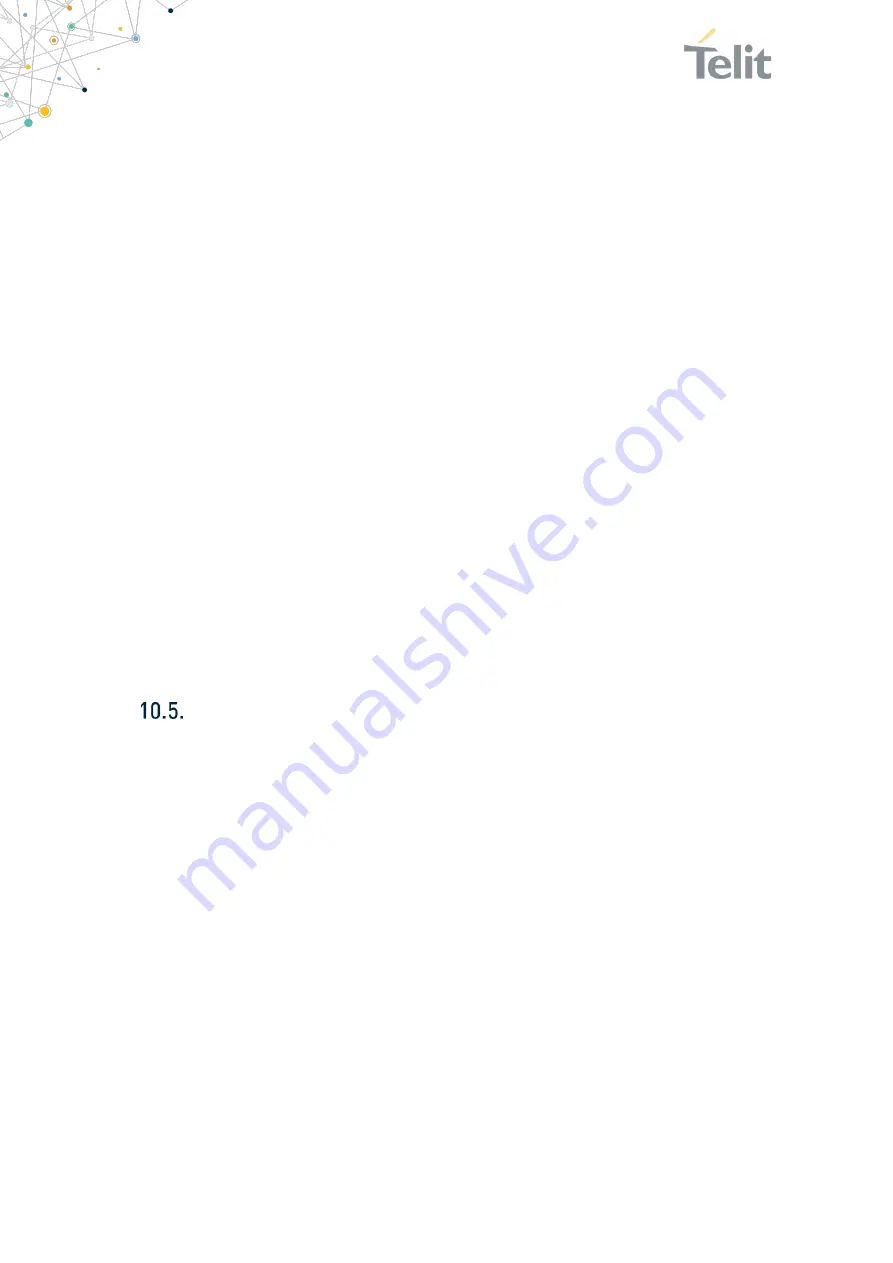
ME910G1 Hardware Design Guide
1VV0301593 Rev.12
Page 69 of 93
2021-09-24
Not Subject to NDA
thermal transfer for FR-4 PCBs is to add thermal vias - plated through-holes (PTH)
between the conductive layers. Vias are created by drilling holes and copper plating them,
in the same way that a PTH or via is used for electrical interconnections between layers.
A series of plated through-hole thermal vias, should be placed in the GND area under the
Telit module of the PCB to provide a thermal connection from the PCB GND to the
additional metal layers of the PCB.
The application PCB layout should include plated through-hole thermal vias for efficient
heat dissipation from the Telit module into the PCB. One of the following types of thermal
vias should be used:
•
Open plated through-hole vias which will provide lower PCB fabrication costs but
may fill with solder.
•
Plugged and capped plated through-hole vias that will provide higher PCB
fabrication costs but will not fill with solder.
Telit recommends creating areas of 10 mil (0.254-mm) vias arranged on a 25 mil (0.635-
mm) rectilinear matrix. The reason for this choice is the combination of cost,
performance and manufacturability. According to several PCB manufacturers, 10-mil
holes and 25-mil spacing are reasonable and repeatable production choice.
A uniform thickness of the metal plating on the PCB will ensure reliable, high Telit
module solder assembly yield.
Stencil
A silk-screen process will be required for the deposition of solder paste to the PCB, for
the reflow of the Telit module to the PCB. The silk-screen process requires the use of an
aperture based metal stencil where the solder paste is transferred through the openings
on the solder pads of the application PCB. To minimize solder voids and ensure maximum
electrical and thermal connectivity of the module to the PCB, large pads, solder volume,
and solder deformation must be considered when designing the stencil. The design and
manufacture of the stencil determines the quality of the solder paste deposition on the
PCB and the resulting solder joint after reflow. The primary stencil parameters are the
size of the opening, the thickness and the method manufacture. The stencil should be
made of stainless steel and the openings layout can be the same of the recommended
footprint (1:1). The recommended thickness shall be 127 um (5 mil). A stencil thickness
of 152 µm (6 mil) can be used as well.
Содержание ME910G1
Страница 1: ...ME910G1 HW Design Guide 1VV0301593 Rev 12 2021 09 24 Telit Technical Documentation...
Страница 93: ......






























